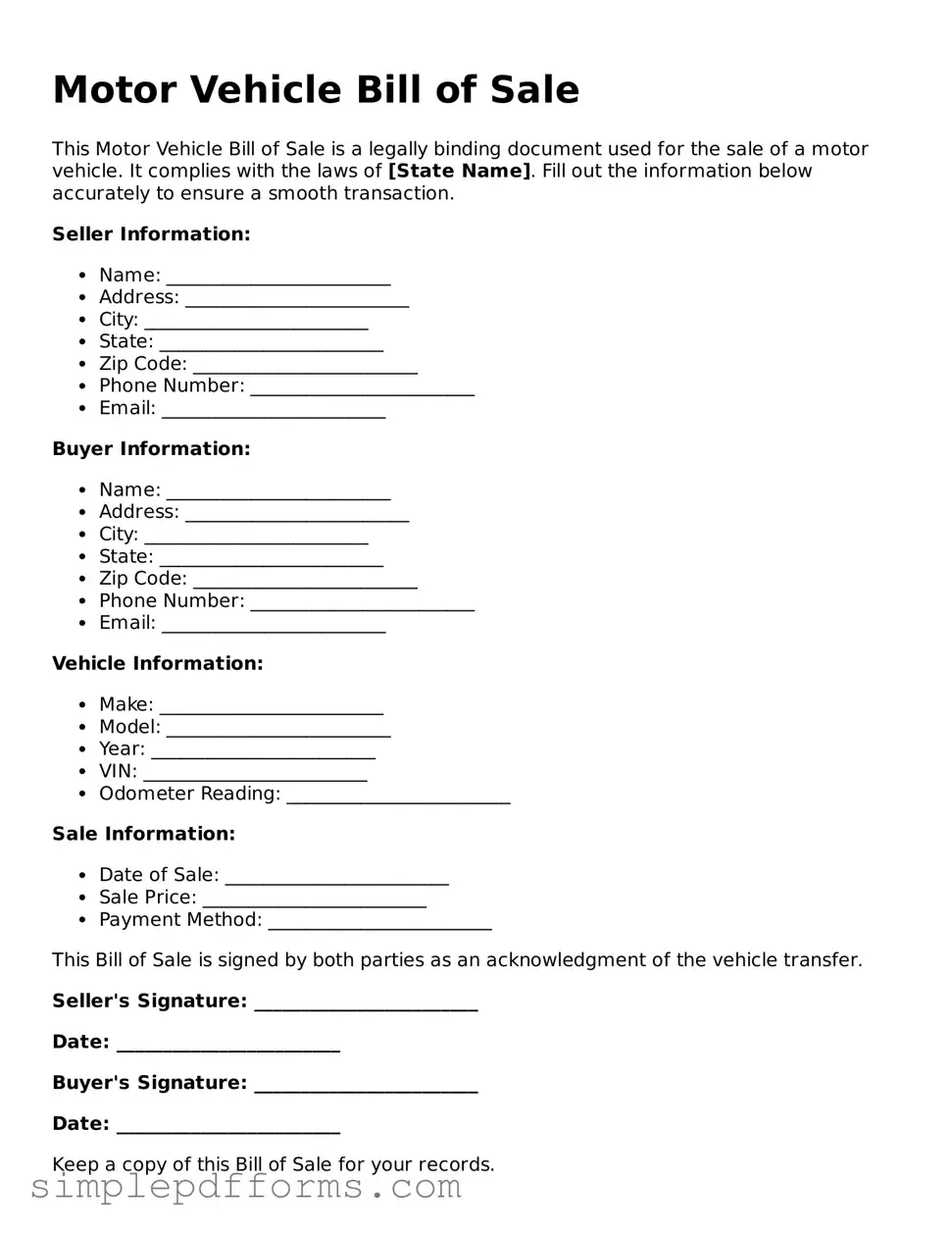Motor Vehicle Bill of Sale
This Motor Vehicle Bill of Sale is a legally binding document used for the sale of a motor vehicle. It complies with the laws of [State Name]. Fill out the information below accurately to ensure a smooth transaction.
Seller Information:
- Name: ________________________
- Address: ________________________
- City: ________________________
- State: ________________________
- Zip Code: ________________________
- Phone Number: ________________________
- Email: ________________________
Buyer Information:
- Name: ________________________
- Address: ________________________
- City: ________________________
- State: ________________________
- Zip Code: ________________________
- Phone Number: ________________________
- Email: ________________________
Vehicle Information:
- Make: ________________________
- Model: ________________________
- Year: ________________________
- VIN: ________________________
- Odometer Reading: ________________________
Sale Information:
- Date of Sale: ________________________
- Sale Price: ________________________
- Payment Method: ________________________
This Bill of Sale is signed by both parties as an acknowledgment of the vehicle transfer.
Seller's Signature: ________________________
Date: ________________________
Buyer's Signature: ________________________
Date: ________________________
Keep a copy of this Bill of Sale for your records.
